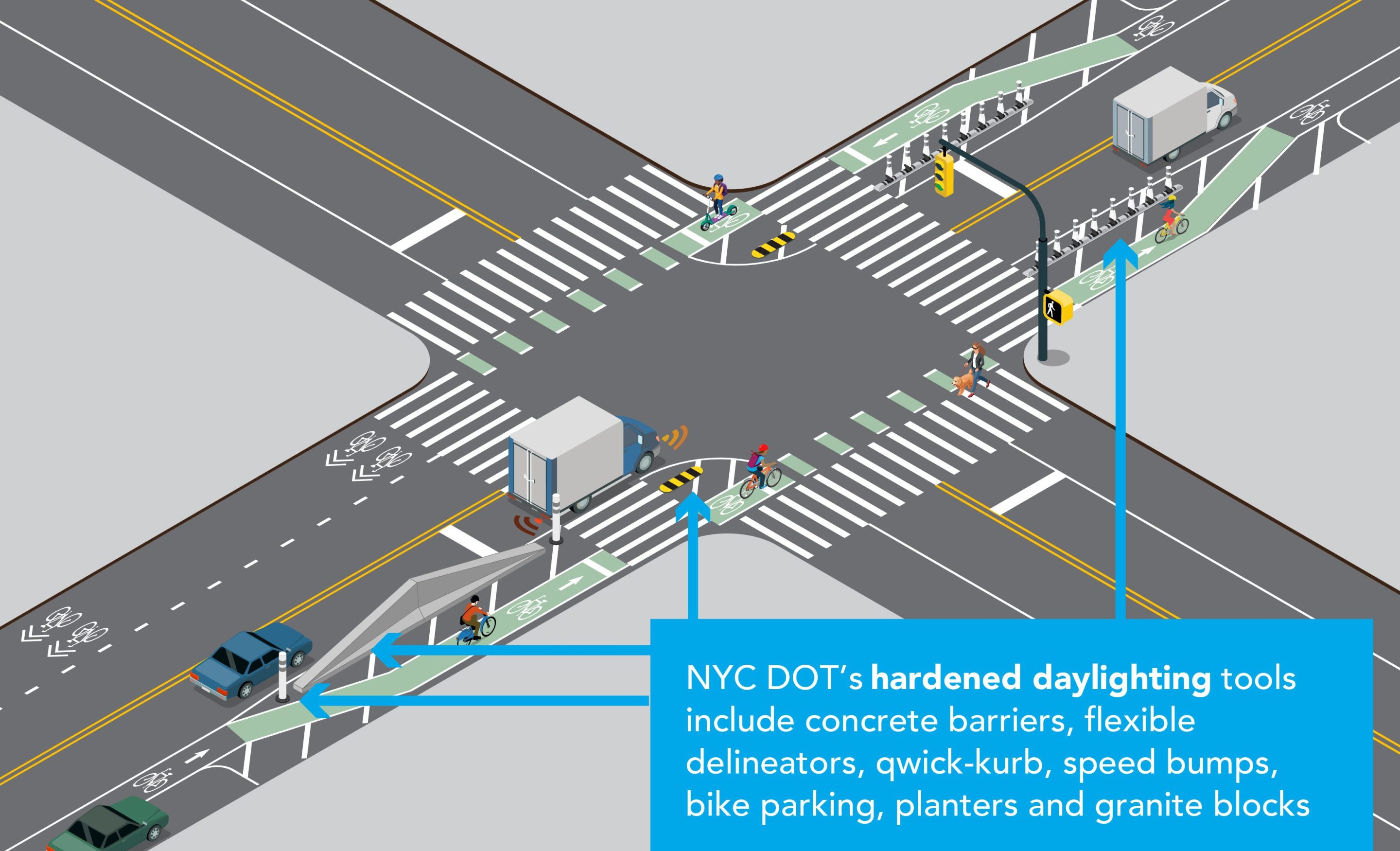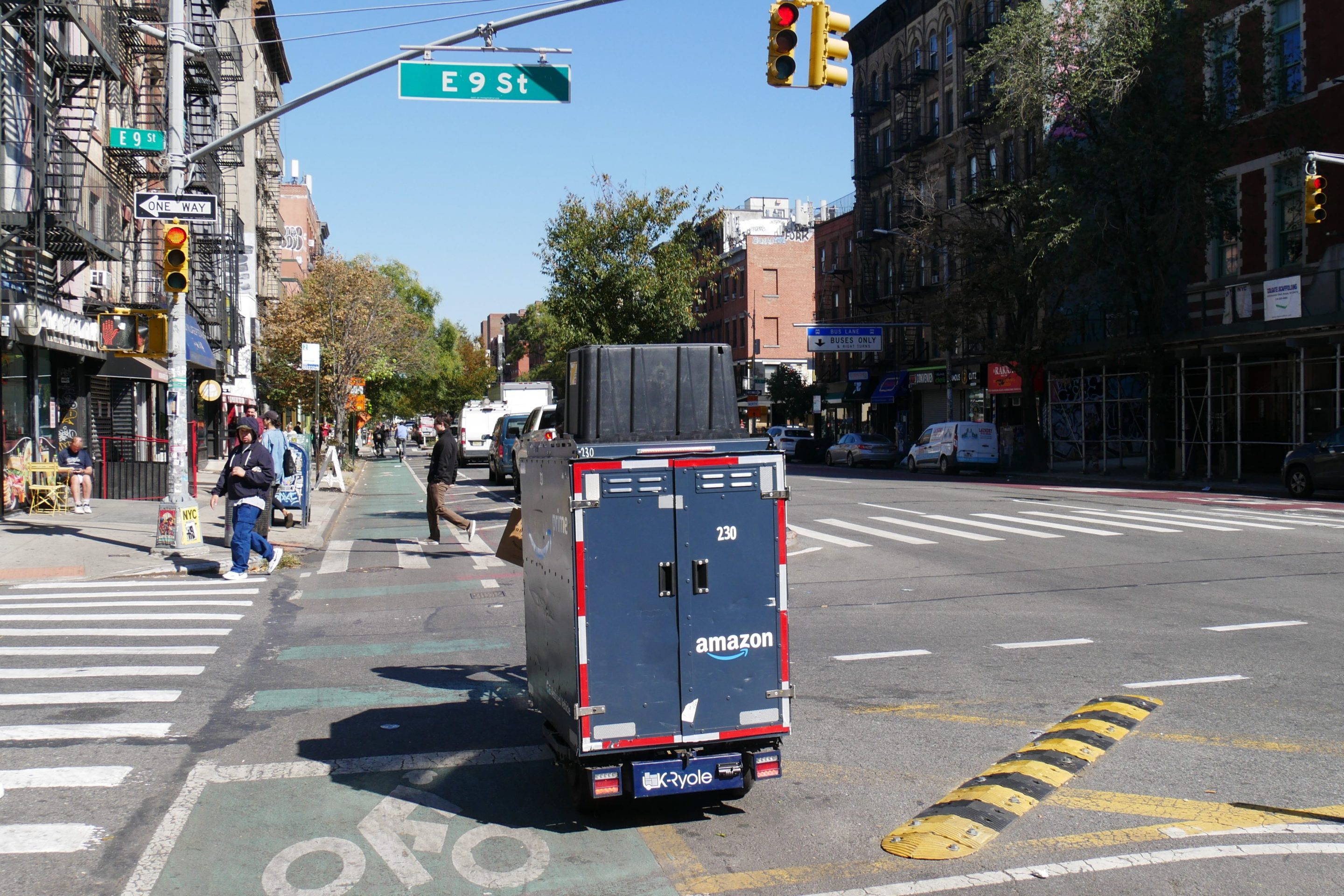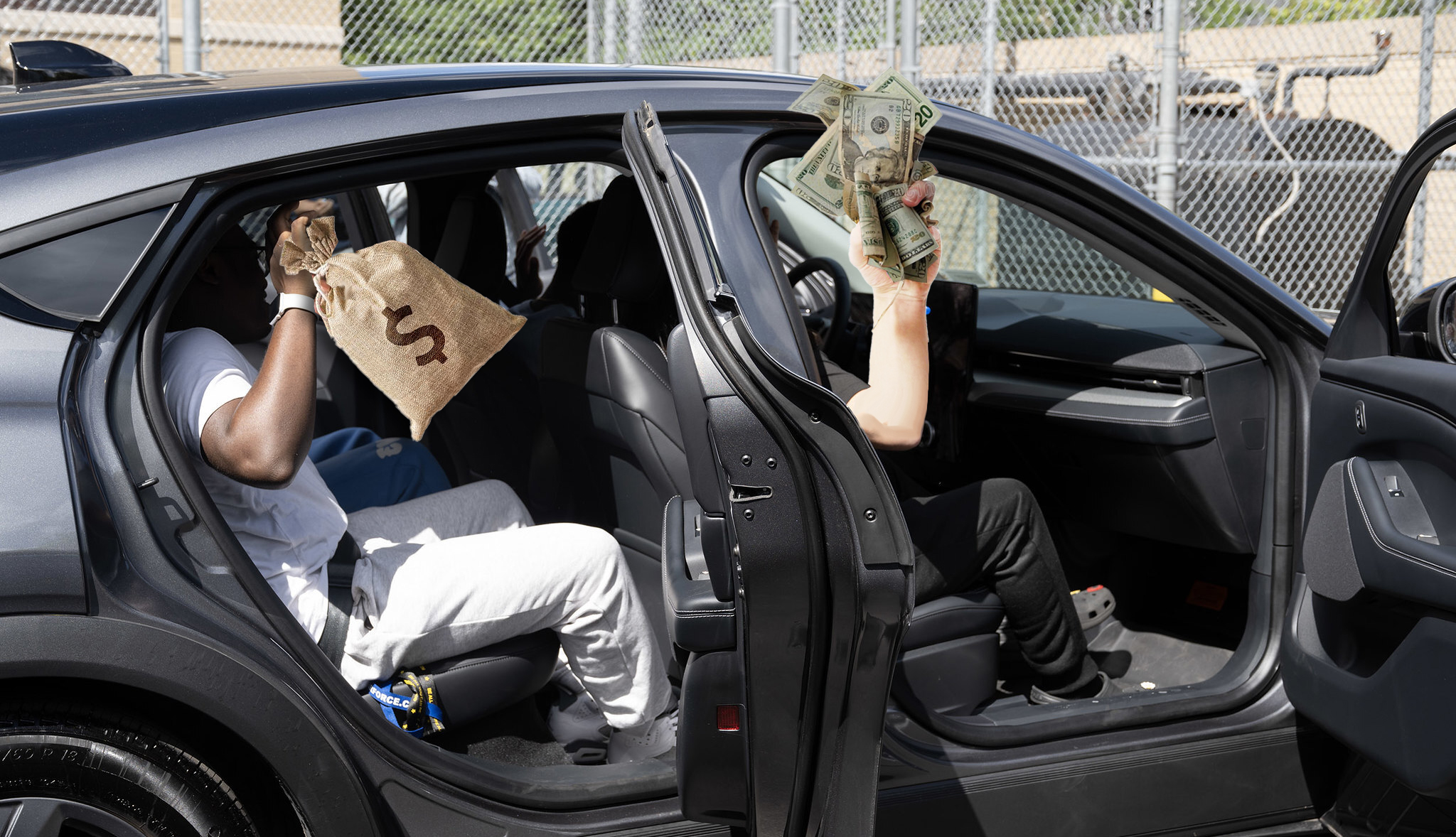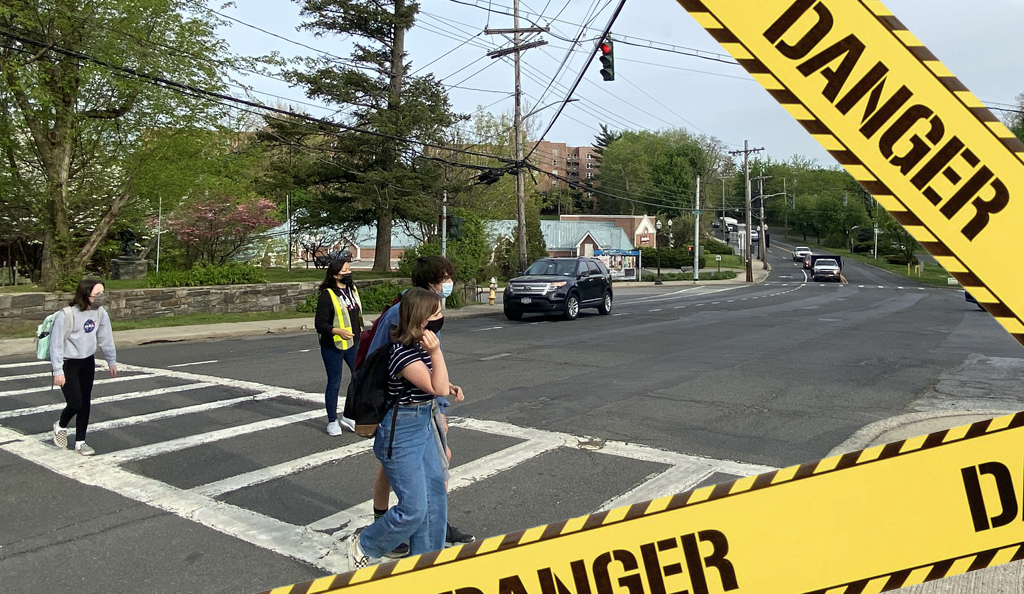You want daylighting? We'll show you daylighting!
The Department of Transportation — under pressure from a growing number of advocates and Council members to ban parking at every intersection in the city to daylight corners for more visibility — will begin rolling out a new design to make intersections safer at six southern Brooklyn crossings this year.
DOT leaders have argued that a universal ban on parking at corners won't improve safety unless there are also physical barriers to keep drivers out — and the new designs double down on that by adding hard infrastructure, which simultaneously creates mini-protected bike lanes.
"Using barriers to clear space at the intersection will help ensure pedestrians, cyclists and turning vehicles can see each other and enhance safety," DOT Commissioner Ydanis Rodriguez said in a statement.
The new design build on the DOT's existing efforts to keep cars from corners with hard infrastructure such as concrete jersey barriers, bike racks, planters, granite blocks, plastic sticks or bumps to slow down turns. The new design would effectively create protected bike lanes at corners thanks to the barriers, even if there is only an unprotected cycling path or a shared lane on the approach.
DOT chose six intersections to redesign this year, including four along wide Ocean Avenue, at Church Avenue, Avenue J, Cortelyou Road and Foster Avenue. Two more are at Avenue J and Bedford Avenue and at Rugby Road and Foster Avenue.
The agency selected the locations because they have not had a lot of safe street treatments in the past, and have a history of turning crashes. On Ocean Avenue between Church and Avenue J, there were 79 reported crashes in 2024 injuring 75 people – more than one a week – including 15 pedestrians and 13 cyclists.
Those car-focused areas are a great place to start, said one cycling supporter, while urging the city to invest more in harder materials than plastic, especially along wide wide roads like Ocean Avenue.
"It’s great to see DOT innovating and experimenting with intersections," said Jon Orcutt, the director of advocacy at Bike New York in a statement. "Anything with real (not plastic) infrastructure in street corners is good news. I also applaud the location list targeting the stroads of southern Brooklyn."
New York City advocates have mobilized a grass-roots effort over the past two years to push for universal daylighting around the city, culminating in a promising Council bill.
But DOT opposes the measure, citing its own contested report that removing parking without adding hard infrastructure could actually encourage drivers to make faster and more dangerous turns.
A whopping 55 percent of pedestrian deaths and 79 percent of pedestrian traffic injuries happen at intersections, according to DOT.
It is already illegal under state law to park near corners, but the Big Apple has long exempted itself in favor of more free car storage.
Keeping corners clear of obstructive cars has been standard practice across more than 40 states and as far back as the 1920s. Just across the river, Hoboken, New Jersey, aggressively implemented daylighting and reduced traffic deaths to zero.
"We always like to see DOT rethinking intersections, especially the very dangerous ones. And any project that builds in daylighting is going to be a win for us," said Jackson Chabot, director of advocacy at Open Plans (which shares a parent company Streetsblog). "This is a great first step, or option for some areas. But we’d love to see some simpler hardening at a quicker pace."
Supporters have pointed out that removing the parking spots would have the extra benefit of making it easier for the agency to install hard daylighting, because they would no longer have to notify community boards about repurposing motor vehicle storage space.






